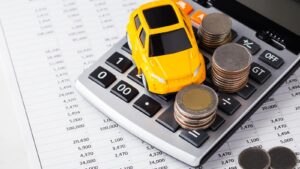
In modern America, it’s almost impossible to live without a car. You need one to get to work, go to the doctor, take the kids to school, and run errands. And, in rural parts of the country, the alternatives are not great – public transit isn’t always available, and getting an Uber or taxi is expensive. But buying a car is also expensive, especially a new one. That’s why so many people opt to buy a used car. But how do you know if you’re getting a good used car instead of a lemon? You follow a checklist.
I’ve put together a checklist of what to look out for when buying a used vehicle. Below is a brief overview of my list, and at the end of this post, you’ll find the detailed list. If you follow this checklist when you go to inspect the vehicle, you should feel confident that you are buying a good used car.
1. Check the exterior.
A good way to see if a car is in good condition is to examine it from the outside. First, look at the sticker on the car to see if it is being sold “as is” or with a warranty. Then, go around to each body panel and inspect them for scratches, dents, and rust (especially at the bottom of doors and wheel wells). Also check to see if all the shades of paint on each body panel are the same, as this will tell you whether a panel of the car has been replaced or not. Be sure to open and close all car doors, inspect the windows for cracks or chips, as well as check whether the car is level on all sides.
As far as tires go, make sure that they are all the same make and tread, and check the wear on the front tires. Tire wear can also indicate if tires have been over or under-inflated, which I talk about more in my detailed guide.
2. Check the interior.
Once you have checked the outside, it’s time to check the inside. If the car smells moldy or musty, it may be a sign that it had leaks. After that, be sure to sit in all the seats and inspect them completely for rips or tears. Turning the car on without turning the engine on can help show whether the control panel is in working order. Check the radio as well, and make sure that there are no problems with the CD or MP3 player. Also check all the rubber seals on the windows and sunroof, if the car has one. Cracks and broken seals may indicate leaks.
3. Check the engine.
Perhaps the most important thing to do when buying a new car is to check the engine. First, check under the hood for anything abnormal in the engine bay. Dirt and dust are fine, but splattered oil and corrosion indicate bigger problems. Also check the rubber hoses, the oil and transmission fluid, the radiator, and the battery, which I show how to do further in my guide. Then, turn the car on and see if it will start immediately when cold. This is important because it shows the health of the overall engine.
4. Check under the vehicle.
Be sure to check under the vehicle for leaks! For more information on leaks and under the vehicle inspections, please take a look at the more detailed guide.
5. Get an independent mechanic inspection.
Finally, in order to cover all your bases, get the car inspected by a mechanic or shop that routinely does diagnostic work. A car dealership should have no problem letting you take the car for inspection if you leave identification at the dealership. If the dealer says an inspection isn’t necessary, that’s all the more reason to get one. An inspection should cost around $100, but it could save you thousands in the long run.
A car is one of the most important, and expensive, things you can own, so it’s important to buy a good one that will last. For a more detailed checklist of do’s and don’ts when buying a used car, check out the free attached pdf.




